When they’re born, kittens don’t have any teeth. Your little kitten goes through two different teething phases. The first one occurs when their baby teeth (all 26 of them!) first come in. This happens early on, typically between two and six weeks old. At around three to four months old until about five months old, your kitten’s baby teeth fall out. By six or seven months old, your kitten will have its adult teeth (all 30 of them!). During teething, your kitten experiences soreness and discomfort. Discover six things you can do to help!
Is Your Kitten Teething? 6 Things To Do To Help
1. Bring in the Chew Toys!
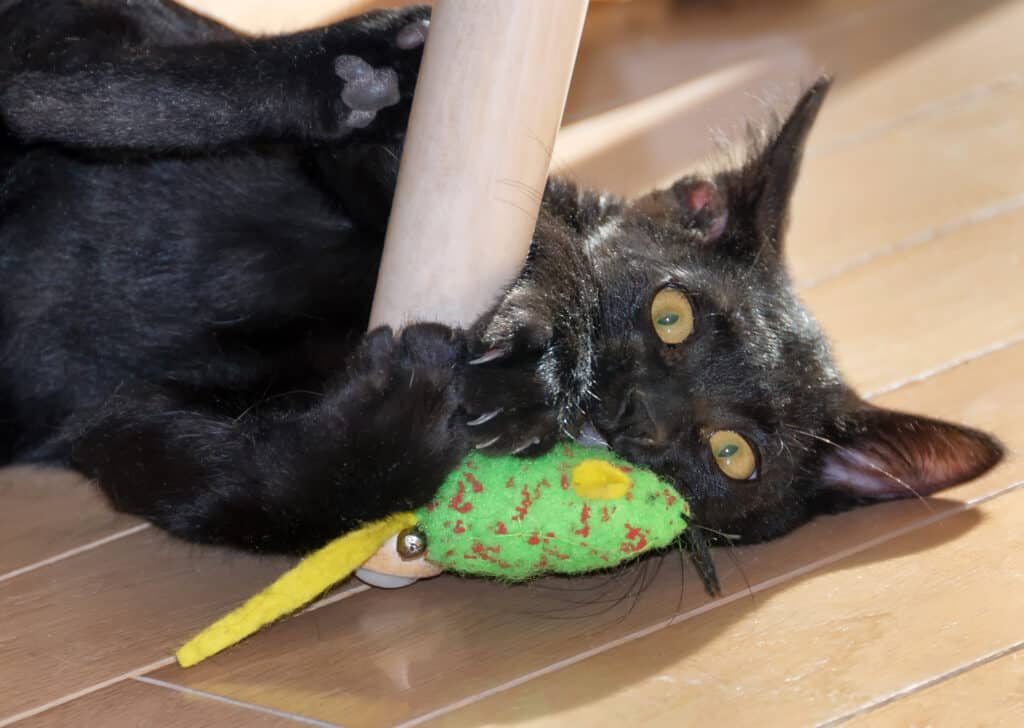
Providing your kitten with soft toys they can chew on can help them find relief during their teething phases.
©Lux Blue/Shutterstock.com
One behavior you’ll immediately notice in teething kittens is chewing. They may take to your electrical cords, your phone charger, or even your furniture. This behavior doesn’t just damage your stuff but can also be harmful to your kitten. You can purchase a host of different chew toys for your kitten to gnaw on and relieve some of the discomfort they feel.
Dr. Colleen Wallace, a cat-only vet at Cozy Cat Veterinary Hospital, told A-Z-Animals, “Kittens exhibit more chewing behavior during the first six to eight weeks while the deciduous teeth are erupting, but chewing is a natural behavior, and some cats may exhibit this form of “oral exploration” for their entire lives. You will need to kitten-proof the house to make sure there are no strings, cords, shoelaces, etc. for the kittens to chew. Soft toys without removable parts are great for teething kittens, especially larger ones that they can use for kicking, biting, and otherwise burning up energy.”
Choose something soft (like rubber) that is easy for your kitten to chew on. Don’t set toys down and forget them, however. Make sure that you’re keeping track of their toys and discarding any items that are loose or broken. You want to prevent accidental swallowing of any toy pieces, which can create an obstruction. If you don’t have a chew toy on hand, you can simply try a washcloth. Just wet it first and pop it in your freezer for a couple of minutes to cool it.
2. Get a Little Help From Your Freezer
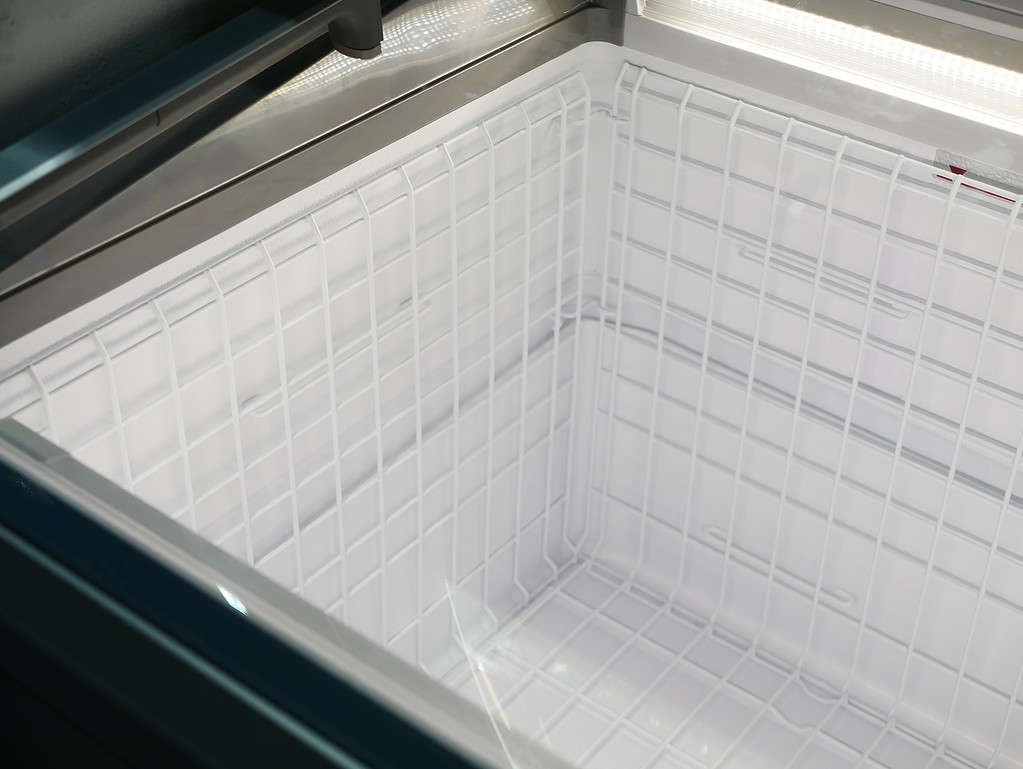
Pop some toys into the freezer for a bit to give your kitten a
coolway to soothe their sore gums!
©Supersmario/iStock via Getty Images
In the same way that you can put a washcloth into your freezer to cool it down before giving it to your kitten, you can also wet and freeze some of the other rubber toys that your kitten loves playing with. They still get to gnaw their little hearts out and they get the cooling effect from the cold toy, which can help to relieve the pain they feel. Before you do this, however, make sure to read the manufacturer’s recommendations to ensure it’s safe to put toys in the freezer. You don’t want anything to crack or crumble because this can be unsafe for your kitten.
3. Get Close and Personal
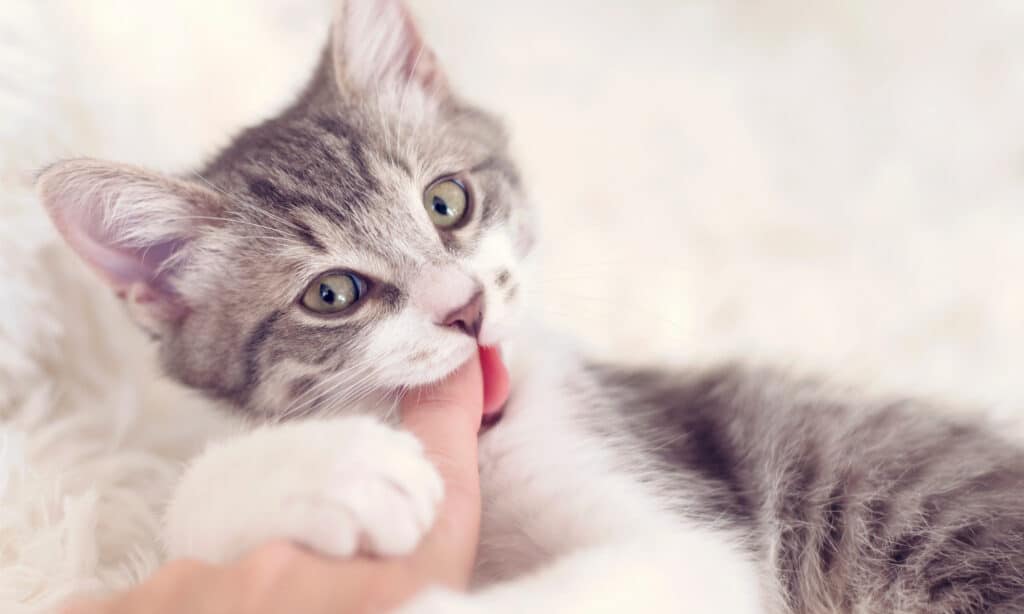
If your kitten allows, a gentle gum massage can help relieve their teething discomfort.
©Lisa Charbonneau/Shutterstock.com
If you don’t have anything on hand, use your hands! Just be sure to wash them first. You can lift your cat’s lips gently and use your fingers to give them a soft gum massage. This can feel soothing to them (though some cats may disapprove when you try). However, if your cat is open to receiving gentle massages, that allows you to offer them some relief. This is also a great way to get them acquainted with your hands touching their mouths. You’re likely to have an easier time when you start brushing their teeth down the road.
4. Incorporate Some Moisture
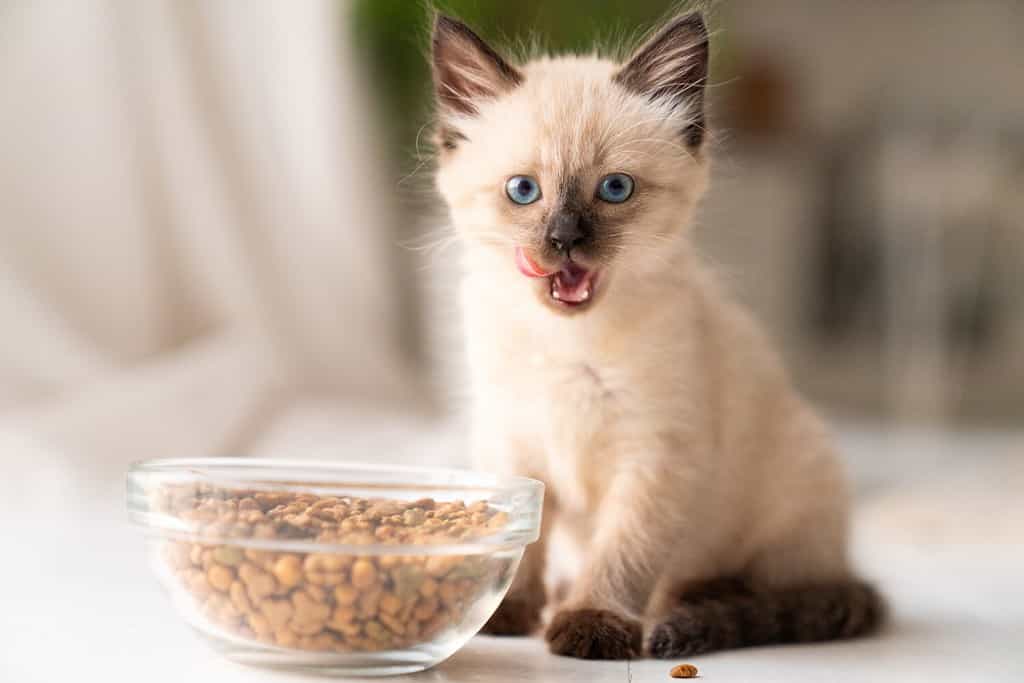
Dry food like kibble provides your kitten with the nutrients it needs, but it may be a little too hard for them during the teething phases. Try dampening it to soften it for them!
©Yarkovoy/Shutterstock.com
If your kitten eats dry food, you know that the kibble size is smaller for their tiny mouths. But you can make the teething phase even more comfortable by slightly dampening their dry food with a little bit of water. This helps to make it a bit softer, so the hard edges of the kibble don’t hurt their already sore gums.
5. Make Mealtimes Even Easier

If you’re only feeding dry kibble, consider adding some wet food to your kitten’s diet.
©MaraZe/Shutterstock.com
Consider incorporating wet food into your kitten’s diet. You might even mix in a little bit of dry kibble so that it helps to moisten it and gives your kitty an easier chewing experience. The softer the food is, the easier it is for them to chew and swallow it. If your teething kitten is avoiding hard kibble, this could impact their weight and development. So, making mealtimes easier can help them until their adult teeth grow in. You might also try freezing their wet food in little ice cube trays. You can serve it up easily and they get the added benefit of the cold sensation, which offers relief.
6. Offer Extra Cuddles and Fun
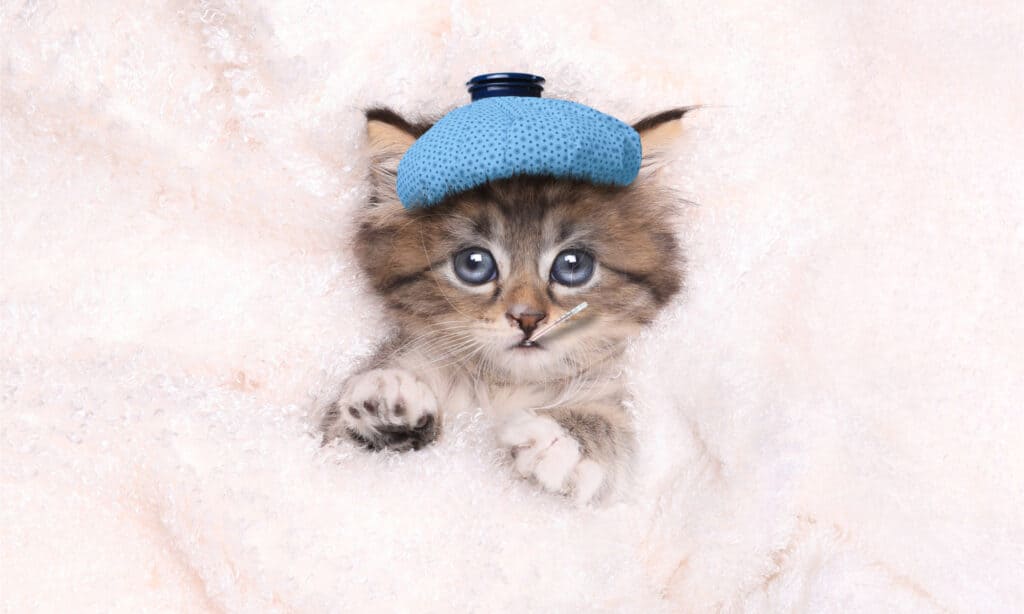
When your kitten isn’t feeling great, extra love, cuddles, and playtime can help them feel better.
©Katrina Brown/Shutterstock.com
Teething can be an uncomfortable process for your kitten and just like you need a little extra love when you’re not feeling well, your kitten does too. You can offer extra cuddles and when they’re feeling playful, spend a little more time with them to distract them from the discomfort they feel.
The photo featured at the top of this post is © iStock.com/nensuria
Thank you for reading! Have some feedback for us? Contact the AZ Animals editorial team.







